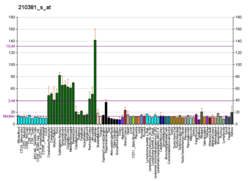CNS effects
CCK receptors significantly influence neurotransmission in the brain, regulating anxiety, feeding, and locomotion. CCK-B expression may correlate parallel to anxiety and depression phenotypes in humans. CCK-B receptors possess a complex regulation of dopamine activity in the brain. CCK-B activation appears to possess a general inhibitory action on dopamine activity in the brain, opposing the dopamine-enhancing effects of CCK-A. However, the effects of CCK-B on dopamine activity vary depending on location. [11] CCK-B antagonism enhances dopamine release in rat striatum. [12] Activation enhances GABA release in rat anterior nucleus accumbens. [13] CCK-B receptors modulate dopamine release, and influence the development of tolerance to opioids. [14] CCK-B activation decreases amphetamine-induced DA release, and contributes to individual variability in response to amphetamine. [15]
In rats, CCK-B antagonism prevents the stress-induced reactivation of cocaine-induced conditioned place preference, and prevents the long-term maintenance and reinstatement of morphine-induced CPP. [16] Blockade of CCK-B potentiates cocaine-induced dopamine overflow in rat striatum. [12] CCK-B may pose a modulatory role in Parkinson's disease. Blockade of CCK-B in dopamine-depleted squirrel monkeys induces significant enhancement of locomotor response to L-DOPA. [17] One study shows that visual hallucinations in Parkinson's disease are associated with cholecystokinin −45C>T polymorphism, and this association is still observed in the presence of the cholecystokinin-A receptor TC/CC genotype, indicating a possible interaction of these two genes in the visual hallucinogenesis in Parkinson's disease. [18]
This page is based on this
Wikipedia article Text is available under the
CC BY-SA 4.0 license; additional terms may apply.
Images, videos and audio are available under their respective licenses.






